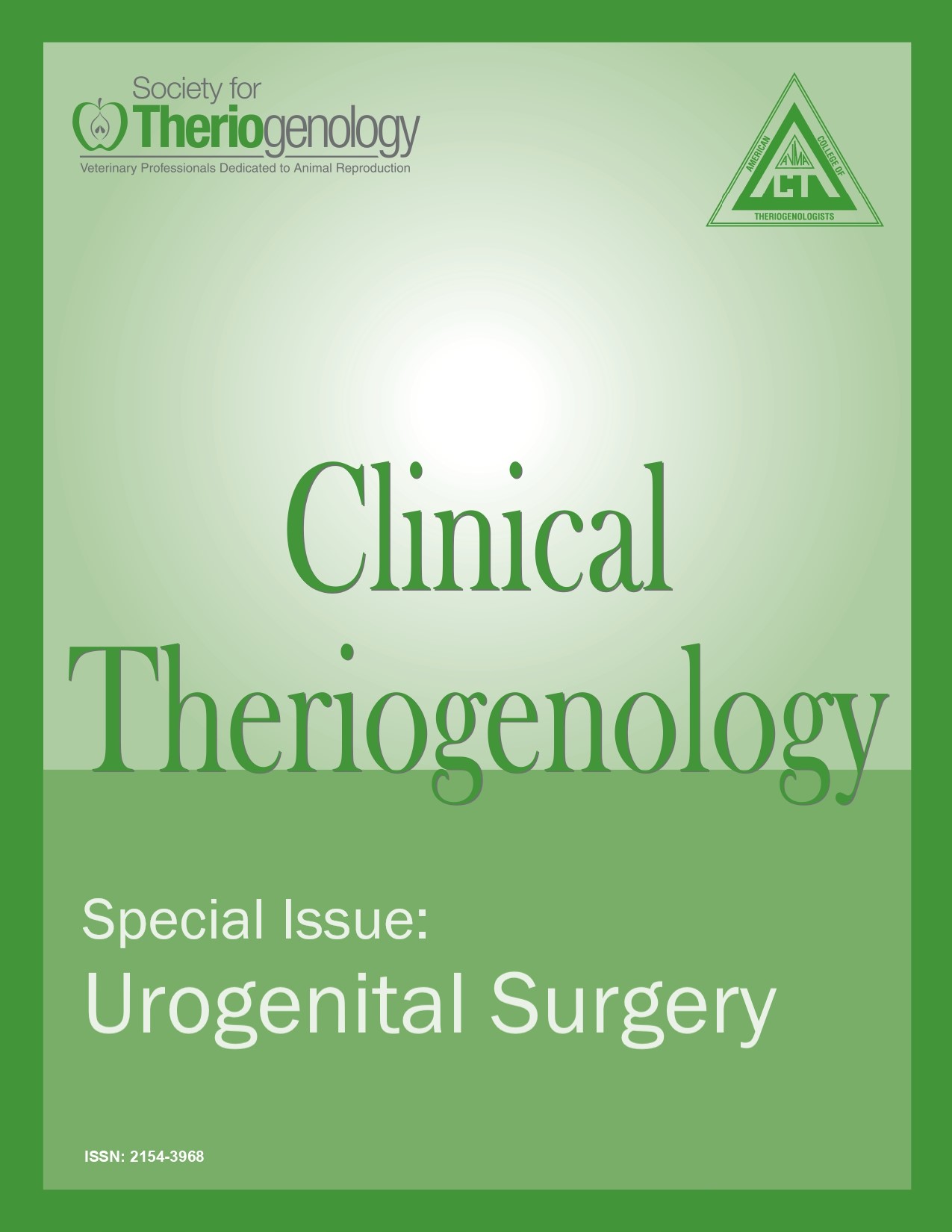Diagnosis of penile denervation in the bull: a review
Abstract
Healthy bulls with satisfactory breeding potential are important to the beef cattle industry. Erection, mounting, intromission, and ejaculation with deposition of semen into the cow’s reproductive tract define successful mating for a breeding bull. Healthy bulls with satisfactory breeding potential are a vital part of the beef cattle industry. While injuries to the penile nerves are relatively uncommon, damage to the dorsal penile nerves is often a career ending injury for a bull. Disease processes that commonly affect the dorsal nerve of the penis include penile hematomas (via rupture of the tunica albuginea) and complex preputial injuries extending into penile tissues. Penile hematomas, cavernosal shunts, and complex preputial injuries can all cause failure of the penis to effectively achieve intromission. Evidence of failed intromission is most commonly described as continual searching of the bull’s glans penis during mounting and absence of the ejaculatory lunge. Disturbance of the dorsal nerve of the penis is strongly suspected following a test mating where no structural or musculoskeletal abnormalities are noted, yet the bull fails to achieve intromission. Definitive diagnosis of denervation of the dorsal nerve of the penis requires advanced diagnostics. The sensory nerve conduction velocity test evaluates nerve functional integrity via measurements of amplitude and velocity of delivered electrical signals. An efficient and rapid diagnosis of dorsal penile nerve injury is important to provide the owner a useful prognosis so that they can make an appropriate management decision to diminish economic losses.
Downloads
References
2. Wolfe DF, Moll HD: Examination and special diagnostic procedures of the penis and prepuce: bulls, rams, and bucks. In: Wolfe DF, Moll HD: editors. Large Animal Urogenital Surgery. 2nd edition, Media, Baltimore, Maryland; Williams & Watkins: 1999: 221–231.
3. Nabors, B: Anatomy of the reproductive system of the bull. In: Hopper R: editor. Bovine Reproduction. 2nd edition, Hoboken; Wiley-Blackwell: 2021:1–10.
4. Beckett SD, Hudson RS, Walker DF: Effect of local anesthesia of the penis and dorsal penile neurectomy on the mating ability of bulls. J Am Vet Med Assoc 1978;173(7):838–839.
5. Maxwell, H: Inability to breed due to injury or abnormality of the external genitalia of bulls. In: Hopper R: editor. Bovine Reproduction. 2nd edition, Hoboken; Wiley-Blackwell: 2021: 155–172.
6. Mysinger PW, Wolfe DF, Redding RW, et al: Sensory nerve conduction velocity of the dorsal penile nerves of bulls. Am J Vet Res 1994;55(7):898–900.
7. Seidel GE, Foote RF: Motion picture analysis of ejaculation in the bull. J Reprod Fertil 1969;20:313–317. doi: 10.1530/jrf.0.0200313

This work is licensed under a Creative Commons Attribution-NonCommercial 4.0 International License.
Authors retain copyright of their work, with first publication rights granted to Clinical Theriogenology. Read more about copyright and licensing here.





